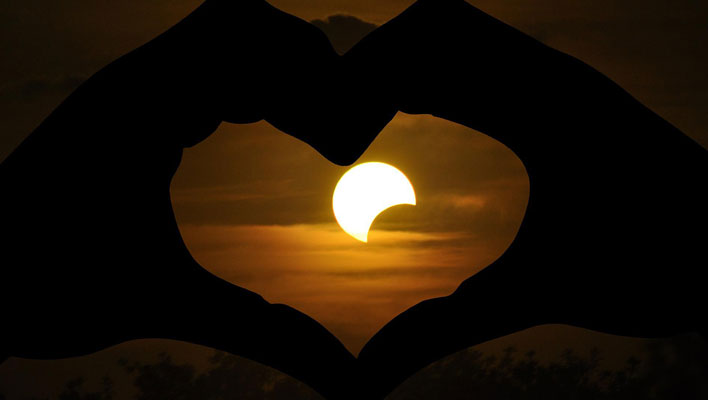The first solar eclipse of 2022 is nearly upon us, and with it will come a heavenly view of the sky. This particular one will be a partial solar eclipse, with the Moon shimmying its way between a chunk of the Sun and the Earth, blocking some of the light beams. The imperfect alignment can be breathtaking, resulting in a crescent view of Earth's closest fireball.
Unfortunately, this won't be visible in every part of the world, including North America. Instead,
NASA says people in parts of southern South America, Antarctica, and the Pacific and Southern Oceans will get a stunning view of the partial eclipse right before and during sunset on Saturday, April 30, 2022. It will start at 2:45 pm ET (18:45 UTC) and hit its peak at 4:42 pm ET (20:42 UTC). If you missed the recent view of
celestial bodies aligning with the Moon, this will be another chance for an awesome sky show.
"As it sets in the west on the evening of April 30, the Sun will appear partially eclipsed for those with clear skies in Chile, Argentina, most of Uruguay, western Paraguay, southwestern Bolivia, southeastern Peru, and a small area of southwestern Brazil," NASA says.
It will also be visible along parts of the northwestern coastline of Antarctica, as well as in the Atlantic Ocean off the southeastern coast of South America, including the Falkland Islands, and in most of the South Pacific and Southern Ocean.
Take Safety Precautions When Viewing A Solar Eclipse
If you happen to be in an area where the partial solar eclipse will be visible, don't rush out and stare at with your naked eye. Looking at the sun without a solar filter is dangerous and can permanently damage your vision, partly or completely. This is true even for partial solar eclipses.
It's a bit late in the game at this point, but your best bet is to track down a pair of certified solar viewing or eclipse glasses. NASA recommends referring to the American Astronomical Society's
list of reputable vendors and solar filters. Otherwise, you risk buying a knockoff that may not actually meet the ISO 12312-2 international safety standard, despite how an item is advertised.
You be able to find a safe pair locally at a brick and mortar store. Chain stores like 7-Eleven, Best Buy, Lowe's, REI, Kroger, and Walmart are known to sell ISO-compliant glasses. You might have some luck at your local library too.
Another option
NASA recommends is to make a pinhole projector. These aren't for looking directly at the Sun, but for projecting sunlight onto a surface. They're also cheap and easy to make, though obviously you're not going to get the same spectacular view.

